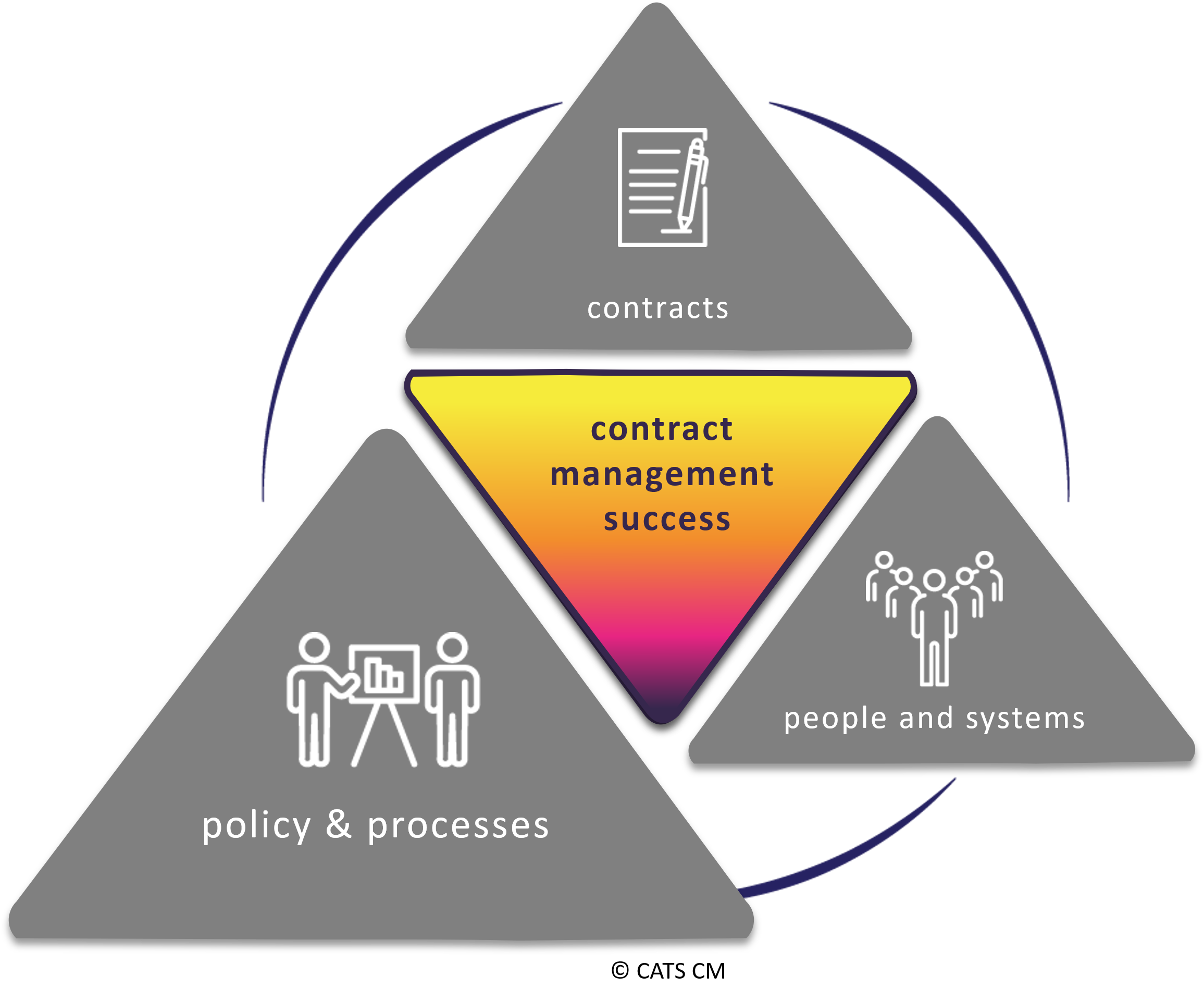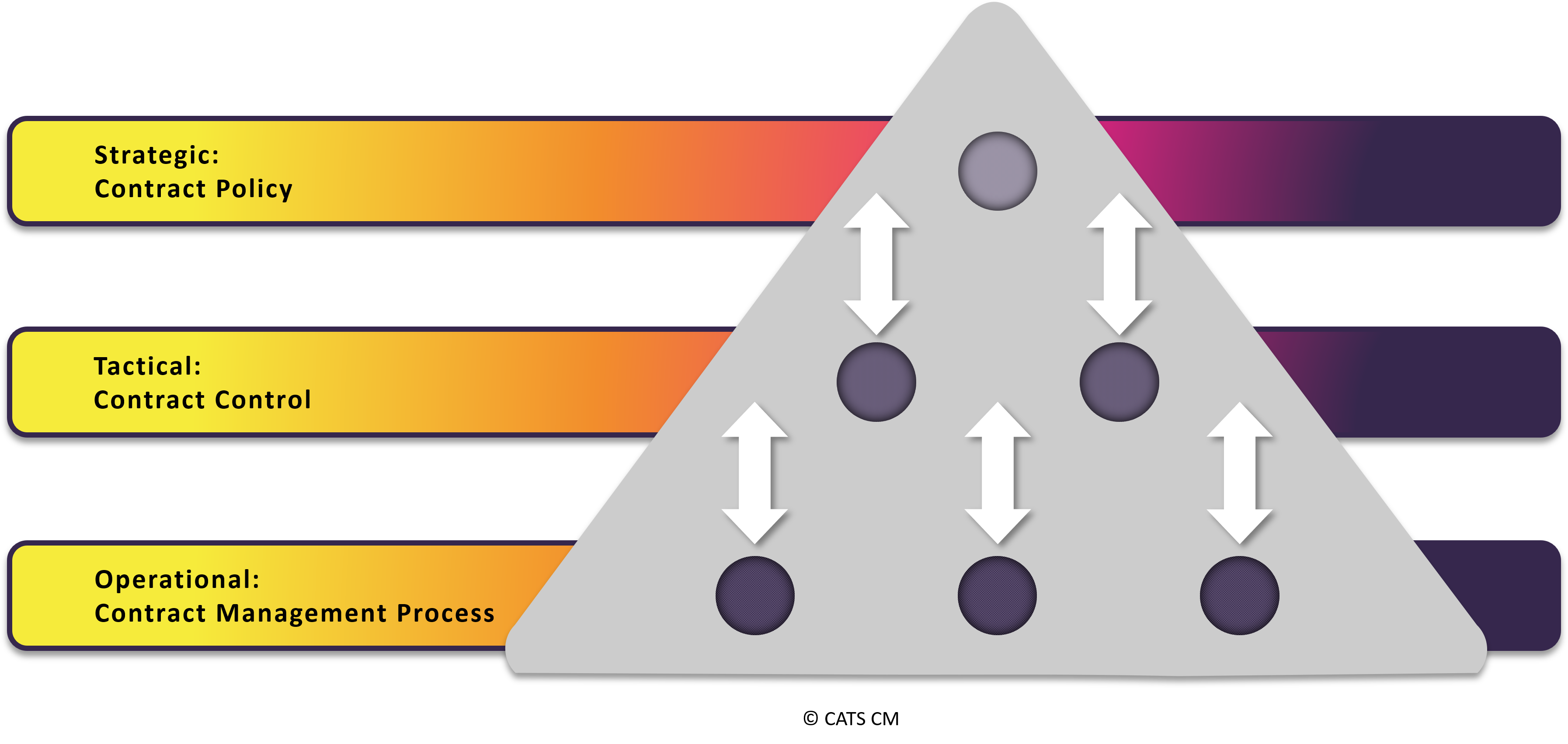In my previous article about success factors in contract management, I wrote about the important choices that the organization’s management has to make when it comes to how contracts should be managed. There are three overarching factors that play a defining role: a policy and accompanying processes; sufficient, competent staff available in addition to process-supporting systems; and contracts that are drawn up while taking the desired contract management into account. In this article, I will take an in-depth look at the first of these factors. How can management ensure successful contract management at strategic, tactical, and operational levels?

The CATS control model
A solid control model consists of a good policy that ensures consistency with contiguous processes and agreements at the strategic level. It is structured in such a way that it offers a fluent reporting flow from the operational to the strategic level in which systems, reports and procedures are seamlessly linked.
The CATS control model offers an excellent framework for controlling the activities related to contracts. It allows organizations to include all factors for successful contract management in the policy and processes.

Figure: The CATS control model
At the strategic level, the organization decides what to do. At a tactical level, it decides how to do it. Who is going to do which activities and when is decided at an operational level.
In the CATS control model, at a strategic level, we use the term Contract Policy, at a tactical level, we talk about Contract Control, and at an operational level, we use the term Contract Management Process.
Strategic level - Contract Policy
At a strategic level, we talk about Contract Policy. At this level, the organization decides how it wants to handle the contract at a strategic, tactical, and operational level. This also includes determining the policy when it comes to entering into contracts. Among other things, a contract management policy includes the following elements:
- A definition of contract management;
- Which contracts will be subjected to contract management?;
- The desired maturity level;
- The contract management process;
- The position of contract management within the contract life cycle;
- The roles involved in drafting and managing contracts;
- The structure of the process in steps and how the contract management scenarios are to be established and implemented;
- The relationship between the roles and functions within the organization;
- The required competencies to fulfill the contract management functions and roles;
- The positioning of contract management within the organization.
Tactical level - Contract Control
The management at the tactical level sees to it that the Contract Policy is further developed to create controllable and manageable processes at the operational level. This ensures, among other things, that the following aspects are considered:
- All contracts the organization enters into comply with the Contract Policy;
- The selection of methods for contract, project and service management;
- The implementation of processes;
- The facilitating of processes;
- The vesting of roles involved in the contracts.
All this must be done in such a way that the operational process can be measured, assessed, analyzed, improved, and adjusted in a timely fashion.
Operational level - Contract Management Process
At an operational level, so within the Contract Management Process, the decisions made at the tactical level regarding measures, agreements, and obligations are being carried out, thereby implementing the strategic level.
Successful contract management at all levels
An organization that wants to handle its contract portfolio successfully, implements a clear and balanced policy to manage its operational processes. Organizing things well at a tactical level ensures that this policy can be managed correctly at the operational level. CATS CM® provides the methods, techniques, procedures, guidelines, and tools that can be used at the operational level to contribute to the cohesion and consistency of an organization’s global contract governance strategy.
This is the fourth blog of the series ‘Contract Management with CATS CM® in a nutshell’, in which we guide you through an overview of our vision and methodology. Do you have any questions for Linda Tonkes and Gert-Jan Vlasveld, the authors of the book Contract Management with CATS CM® version 4? Then please send an email to questions@cats-cm.com!